Not so many Romans know or have ever been to the Art Deco district of Rome. It is called Coppedè District and it is an outstanding example of Art Nouveau in Italy.
So, in case you are visiting our capital city, you definitely should include the tour to this amazing district.
Why? Because this is the boldest artistic and architectural experiment ever undertaken in Rome, if not in all of Italy. In this small Art Deco neighborhood of Rome, in fact, Art Nouveau, Neo-Gothic, Kitsch, Baroque and even Modernism blend together, creating something beautiful and truly unique.
Before we discover the amazing Art Deco district in Rome, let's introduce the Art Nouveau movement in Italy!

Art Deco: art and architecture in the heart of Rome
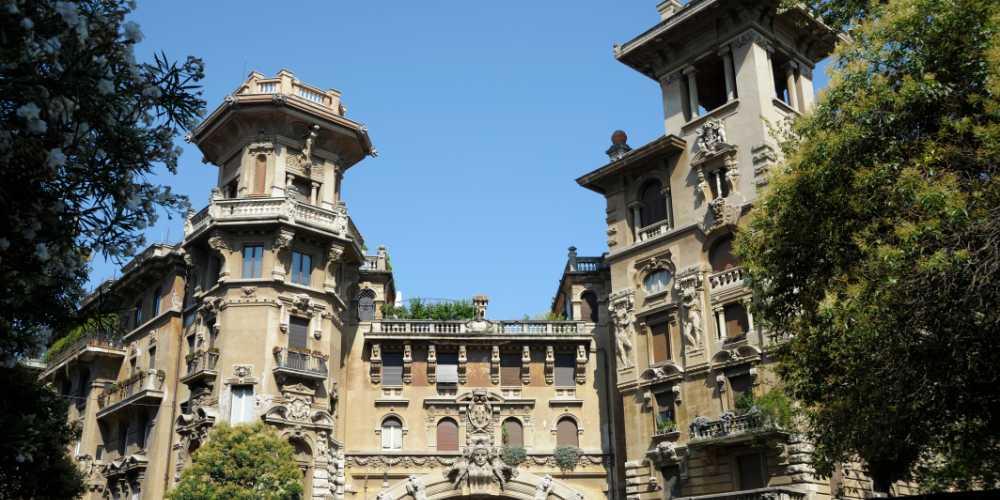
Art Deco, or Art Nouveau, in Italy is called "stile Liberty" (Liberty style).
In fact, the word "Liberty" derives from that of the warehouses founded in London in 1875 by A. Lasenby Liberty. It was specialized in the sale of products from the Far East.
The Art Nouveau artists, not only in Italy, used to take Nature as a source of inspiration. Artists in fact evidently stylized its elements and expanded their subjects with the addition of algae, blades of grass, insects.
Art Deco, above all, found its greatest success in architecture, leaving us one of the most lasting testimonies.
In Italy, the artistic current of Art Nouveau will dissolve with the beginning of the WWI but many Italian cities, including Rome, will retain the architectural apparatus of many palaces and villas.
Thus, the historical memory of the Belle Époque period can come down to us.
A preview of Art Nouveau in Italy: Rome as depicted by D'Annunzio
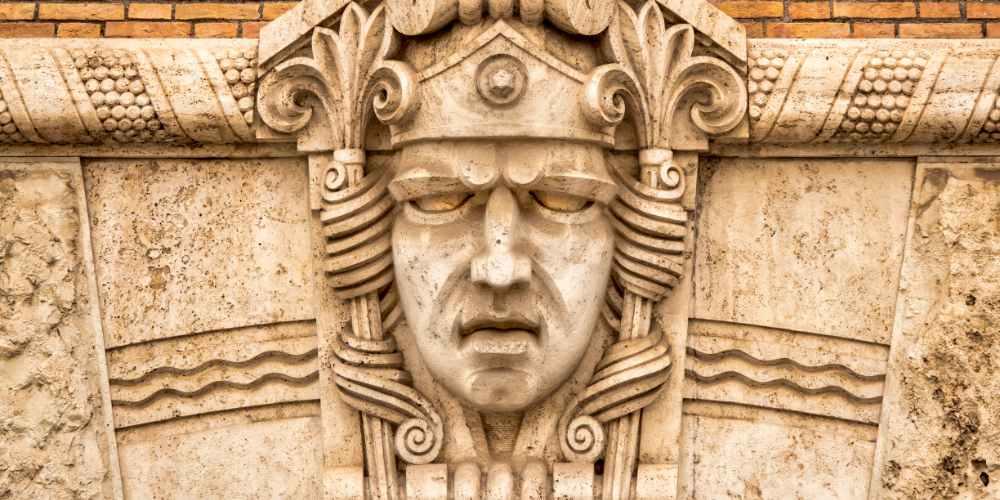
With these words Gabriele D'Annunzio, one of the greatest poets, playwrights and writers of the Italian XX century, writes about Rome in his novel Il Piacere:
“Rome was his great love: not the Rome of the Caesars, but the Rome of the Popes; not the Rome of the Arches, of the Baths, of the Forums, but the Rome of the Villas, Fountains and Churches. He would have given the whole Colosseum for the Villa Medici, the Campo Vaccino for the Spanish Steps, the Arch of Titus for the Fontanella delle Tartarughe. The princely magnificence of the Colonna, Doria, Barberini attracted much more than the ruined imperial grandeur".
G. D'Annunzio, Il Piacere, 1888.
This is the very beginning of his famous novel.
We are in the rooms of Palazzo Zuccari, at the beginning of via Gregoriana, just after crossing the Spanish Steps, whose clock is striking three-thirty.
Elena Muti is about to arrive, the beautiful woman with whom Andrea had had a stormy relationship that had suddenly stopped two years earlier. Now she, who is married to an English lord and lives abroad, is about to reach the old lover, who awaits her in a scenario that is the quintessence of the taste of Art Deco, which sometimes ends up becoming truly Kitsch.
In the novel, you can read about the juniper wood that burns in the fireplace, the brocatelle curtains with a flowery texture, exquisitely made teacups decorated with mythological figures and a great profusion of fragrant flowers inside crystal cups, leaves, petals. In other words, the true symbols of the Art Nouveau in Italy.
"A big rose white, which gradually disintegrated, languid, soft with something feminine”.
G. D’Annunzio, Il Piacere, 1888.
Art Deco gets in Rome: the beautiful district in the heart of the city
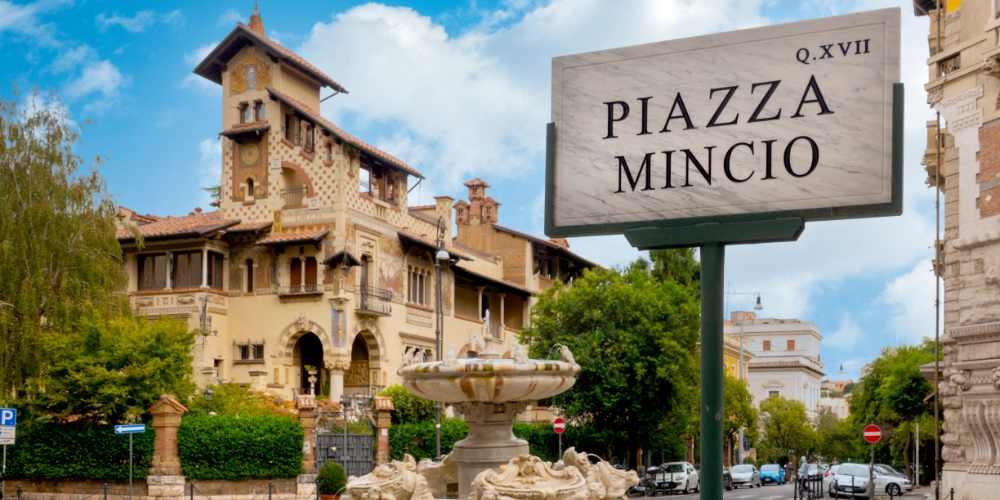
The Italian novelist's words magically introduced us to the discovery of this extraordinary style.
Indeed, at the turn of the XIX century and the first decades of the XX century, in the very period in which he was writing, the Art Deco district in Rome was designed. Gino Coppedè, from whom the district bears is name, has been one of the leading architects of the project. From its very beginning, it has been a novelty and an authentic provocation to classical taste.
Thus, the Roman Art Nouveau district, although remodeled in later years, retains the rebellious spirit of the designers.
One can observe the eclectic decorative apparatus and stylistic features related to mythology, esotericism, symbolism, mystery, but also irony and provocation to continue living a dream even in adulthood.
What you should visit in the Art Deco District
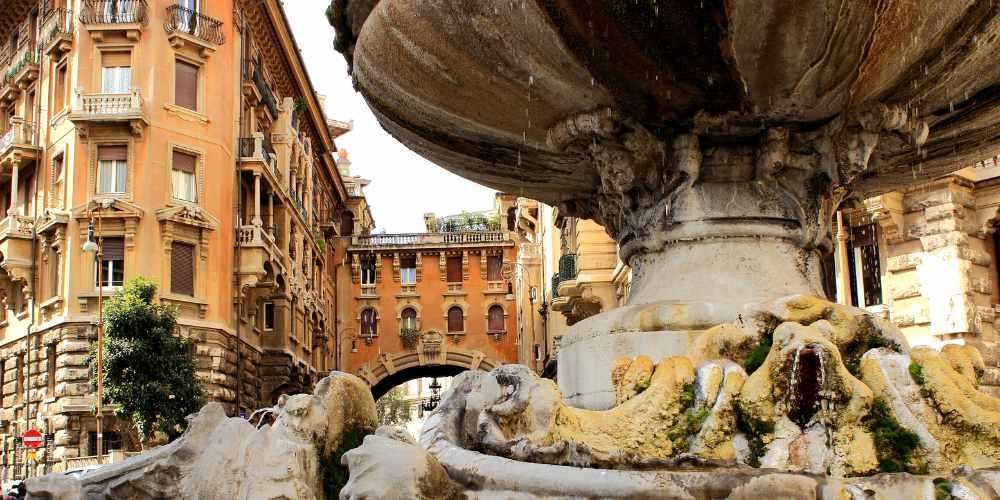
Between Piazza Buenos Aires and Via Tagliamento, the neighborhood has 26 apartment buildings and 17 cottages, all built between 1916 and 1927. Designed for the middle class, this Italian Art Nouveau district soon became a genteel neighborhood.
On the facades of the buildings, you can read Greek influences in the friezes, Assyro-Babylonian ones in the masks, medieval in the turreted elevations and dreamlike scenarios of the monstrous or fantastic forms, to the more complex Art Deco references in the floral motifs. An extravagant explosion of shapes, geometries and colors from the fantastic and allegorical world.
On Piazza Mincio, the Fontana delle Rane (the Fountain of the Frogs) is a real milestone for fans of the Beatles, who, after a concert at the Piper nightclub, took a bath here, wearing their clothes.
Facing the Square, there is the Villino delle Fate (Little Villa of the Fairies). Set in an exotic garden, it is a fairy tale house for the anthropomorphic figures of cherubs and garlands, falconers with their hawks, nuns and monks, as well as mythological and zodiac animals.
Because of the surreal and eerie dimension of some of the views, this neighborhood has been the set of more than one film, including those of horror director Dario Argento, who shot Inferno and The Bird with Crystal Plumage here.
How to get to the Roman Art Nouveau district
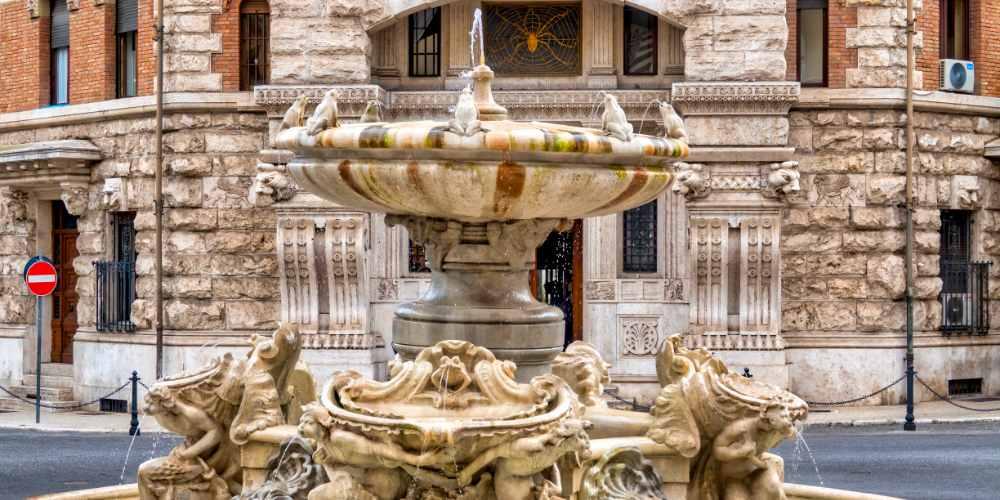
Located within the larger Trieste district (Nomentana area), the Art Deco neighborhood enjoys a central core and a series of buildings that branch out radially from Piazza Mincio.
The neighborhood's most striking entrance is represented by an archway located on Via del Tagliamento. A few steps later, one sees the fountain of Piazza Mincio, from which one's walk through the neighborhood can begin.
How to get there?
By metro
You can get off at the "Policlinico" stop thanks to the metro line B. From the stop, you will need to consider a walk of about 1.5 km (0.95 mi).
By bus
The bus lines that connect the Art Deco district to the rest of Rome are 38 (Trieste/Trento or Trieste/Trasimeno stop), 82 (Nomentana/Trieste stop), and 90 (Nomentana/XXI aprile stop).
The closest stop, however, is certainly Tagliamento/Clitunno reachable by line 92 (from Termini to Marliana and vice versa).
How to get to the Coppedè district from Termini train station
As we have seen, the first method is definitely by metro (B line).
Alternatively, buses. All the lines we mentioned earlier start right from Termini: 38, 82, 90, 92.
Villa Paganini B&B: enjoy your stay in the heart of the Art Deco district
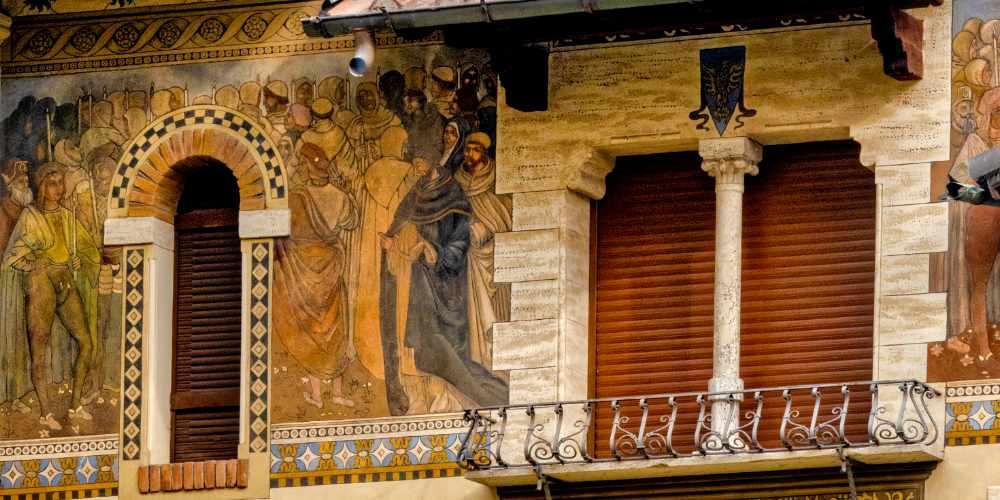
In this unique setting, which combines art with architecture that is out of the ordinary in terms of originality and aesthetics, the Villa Paganini B&B was born.
Here it is possible to stay in a small single-family villa dating back to the last years of the XIX century, nestled in a prestigious residential area. The maze of streets, beautiful gardens and Art Nouveau villas, in fact, create right around here an unexpected and enchanting area in the heart of Italy's capital.
The cottage is surrounded by a large furnished garden, where during the warm season it is possible to have breakfast, sunbathe, read and rest.
The B&B takes its name from the adjoining Villa Paganini, and enhances the memory lane of the most important villas in the capital city, giving the rooms the names of Pamphilj, Borghese and Torlonia.
The newly restored property has three superior rooms, finished in every detail, furnished with class and elegance, equipped with en-suite bathroom, hair dryer, safe, adjustable air conditioning, plasma TV, satellite, soundproof windows. In other words, it fully complies with the standards imposed to ensure a high standard of hospitality in the Bed and Breakfast formula.
B&B Villa Paganini's rooms retain the beauty of the Art Deco architecture, with their high vaulted ceilings and warm parquet floors. Guests, at any time of the day, can enjoy coffee or tea, a complimentary set at their disposal. The villas and gardens adjacent to the B&B allow for pleasant jogging.
Immerse yourself in the beauty of Rome's Art Deco District: it will be like giving new light to a dream that has never been extinguished.
About the author
Written on 20/12/2022

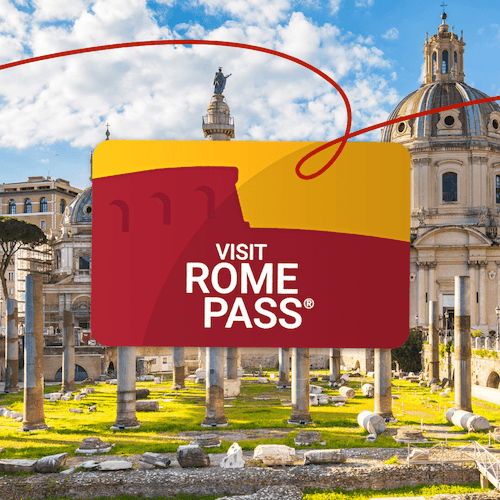
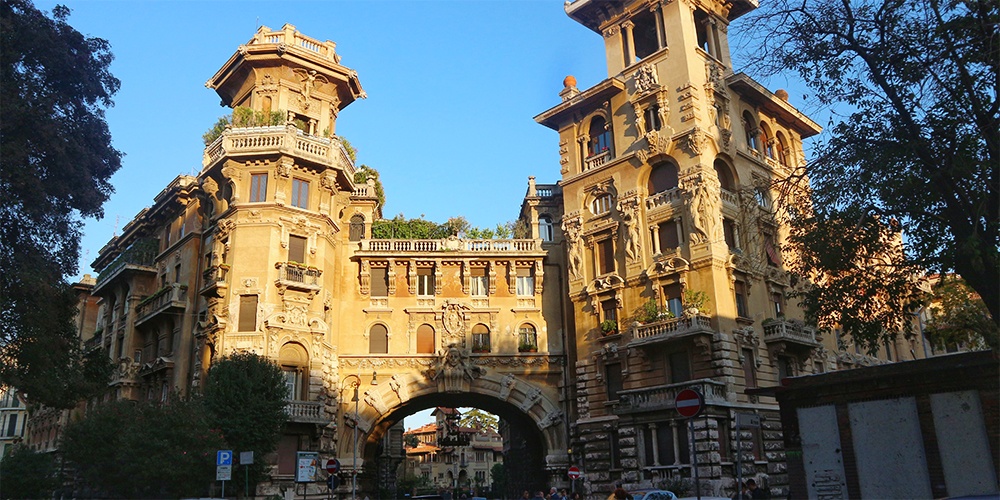

Domenico Moramarco
An outstanding example of Art Deco in Italy is located in its capital. Explore with us the Art Nouveau district in Rome.